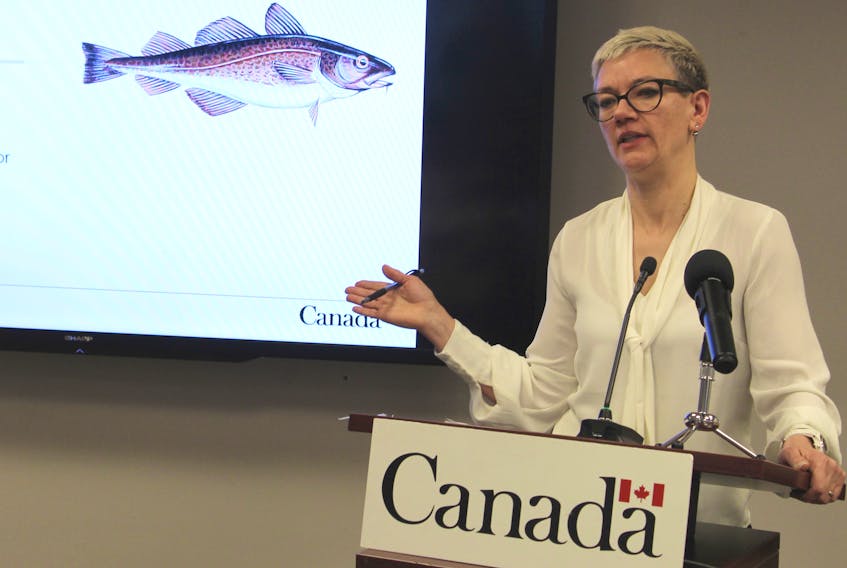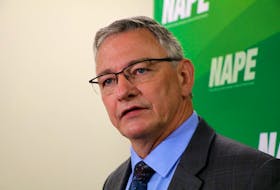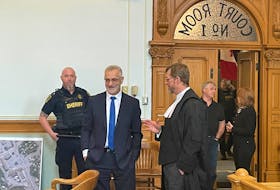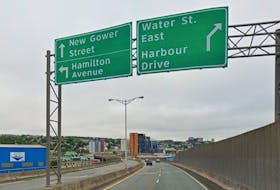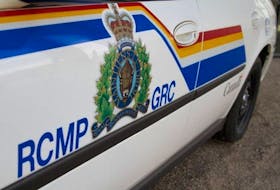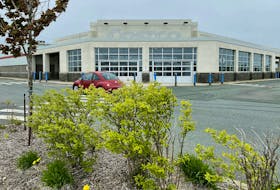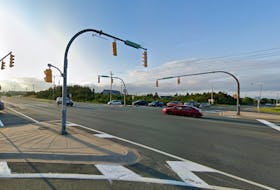ST. JOHN'S, N.L. — There are fewer cod in the 3Ps area off southern Newfoundland than ever recorded, according to new data released Wednesday by the Department of Fisheries and Oceans (DFO).
The department says the stock has entered the “critical zone” for the northern cod population in the 3Ps area, with a high probability the stock will remain critical through to 2022. If no cod were taken from the water between now and then, DFO says, there is just a 16 per cent chance the stock would show any growth.
DFO says there are several contributing factors to the decline, including increased water temperature, which results in smaller, less healthy cod. The changing ecosystem has seen smaller phytoplankton blooms in the spring, paired with less zooplankton, the two kinds of plankton that form the basis of the food chain in the ocean. Warm waters increase the presence of predators for cod in the area, including spiny dogfish and silver hake.
Karen Dwyer, a biologist with DFO, says while seals have been shown to be a problem for cod stocks in other parts of Atlantic Canada, there’s limited evidence to suggest there are similar problems in 3Ps, which spans from Cape St. Mary’s to the Burgeo area, also encompassing St-Pierre-Miquelon.
“Yes, in the southern gulf, there have been linkages with natural mortality and seals — grey seals. They have shown this definitively. In northern Newfoundland, where harp seals were potentially a problem, all the evidence we looked at indicated that it wasn’t a problem, based on the fact that seals spend a lot of their time in the Arctic, they don’t overlap as much, things like that,” said Dwyer.
“Now, in 3Ps, this new increase in natural mortality, this is new that we have this information. Now, we have to go and investigate — is this an issue? From the information we have, seals in this area eat a lot of salmon … and there’s not huge numbers in the area.”
Survey work in the area is upcoming to research the impact of the seals in the 3Ps area and the cod stock.
The department says a new model for estimating the amount of spawning cod in the area has allowed scientists to distinguish between fish that are taken by commercial fishermen and those that die from natural causes. The data shows natural mortality has been at its highest over the last four years, with a 40 per cent decrease in the stock from natural causes in 2019 alone. Natural causes took three times more fish from the water than the commercial fishery did in 2019, DFO says.
While a decision on the total allowable catch for the area will be made later by fisheries managers, the department is recommending that “removals from all sources must be kept at the lowest possible level until the stock clears the critical zone.”
In terms of how humans can help the stock recover, it’s about controlling the amount of fish taken and studying the ecosystem.
“The way I see it is we can only have the influence of affecting fish mortality. That’s the only lever we have. The other thing is to try to understand what’s happening in the environment more,” said Dwyer.
“I think a lot of scientific study is headed that way right now, to try and figure out what’s happening in the environment and how it’s going to affect fish stocks. It’s a problem everywhere. I think that’s all we can do.”
The new numbers come as part of a new modelling system being used by the department, which DFO says is much more comprehensive than previous methods used to measure cod stocks in the province.
The previous model used only data gained from bottom trawl surveys used by DFO going back to 1983. The new method uses data from commercial fish landings dating back to 1959, research surveys compiled by DFO, industry and the French fishing industry off St-Pierre and Miquelon, and sentinel surveys for the inshore fishery. The new data modelling can distinguish between fish taken from the water by industry, as well as natural causes for fish death.
The new model as result in an updated Limit Reference Point (LRP), which refers to the amount of cod biomass that determines whether the stock is in a cautious zone and the critical zone. The previous was 48,000 tonnes of biomass, which is the amount of biomass recorded in 1994, two years after the moratorium on cod fishing was announced. The new LRP is 66,000 tones. The cod biomass will need to get up to that level in order to not be considered critical. The current estimated biomass of cod is 24 per cent of that amount, or approximately 15,840 tonnes of spawning biomass, or fish that can reproduce and contribute to the recovery of the stock.
Model questions
The new method of counting the cod stock has raised concerns with the Atlantic Groundfish Council, which noted in a news release that it doesn’t usually question the science presented by DFO.
“Our sector has consistently demonstrated our willingness to make necessary sacrifices for the sustainability of the stock, advocating for total allowable catch reductions to mitigate and reverse any downturn in stock health. However, those decisions must be based on the best possible science, and we strongly believe this new assessment model is overly pessimistic and understates important data collected by the department’s own research vessel survey,” Kris Vascotto, executive director of the Atlantic Groundfish Council, stated in the release.
“While we accept the stock has faced recent challenges, we question if the situation is as dire as was presented.”
Fish, Food and Allied Workers (FFAW) union president Keith Sullivan shares some concerns with the Atlantic Groundfish Council.
“According to the new model, the biomass of cod in 3Ps has declined somewhat since the last assessment, however the most notable change from this model is the perception of the stock’s health. Significant gaps in information prevent a comprehensive analysis of the stock. DFO’s assessment must focus on the key drivers of natural mortality, particularly predation,” Sullivan stated in an FFAW news release.
Sullivan called on the federal government to intervene to help save the weakened stock.
“Addressing seal predation and removing offshore draggers is within our control and it’s time for the new minister (Bernadette Jordan) to take immediate action before the impacts cannot be reversed,” Sullivan stated.
“It’s clear the current way of doing things is not protecting the sustainability of the fishery or our coastal communities.”
Twitter: @DavidMaherNL

